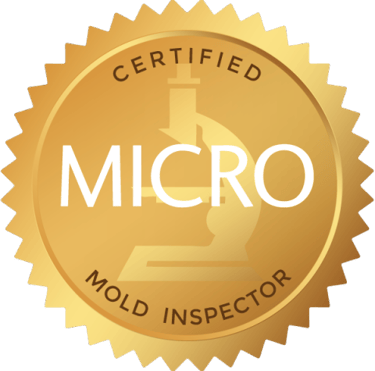Understanding the Link Between Mold and Allergies: A Proactive Approach to Air Quality
Ever wondered why your allergies act up with the weather or in certain rooms? Dive into our latest post where we explore the often overlooked link between mold and allergies. Learn how mold can trigger not just a sneeze fest but serious health issues. Discover proactive steps to combat mold, enhance your indoor air quality, and reclaim your breath of fresh air!


What is Mold and How Does It Affect Health?
Mold is a type of fungus that plays a vital role in the decomposition of organic matter. Classified biologically within the kingdom Fungi, mold thrives in damp and humid environments, where it can reproduce by releasing microscopic spores into the air. These spores can easily become airborne and make their way into indoor spaces, posing potential health risks to those exposed. Common types of mold found indoors include Cladosporium, Aspergillus, and Stachybotrys chartarum, the latter often referred to as black mold.
When individuals inhale mold spores, they may experience a range of health issues, especially those who already suffer from allergies or asthma. Mold spores can act as allergens, triggering an immune response in sensitive individuals. Symptoms related to mold exposure often include sneezing, coughing, nasal congestion, itchy or watery eyes, and skin rashes. In more severe cases, those with pre-existing respiratory conditions may confront increased asthma attacks or unexplained respiratory issues. Understanding the impact of mold on health is crucial for maintaining a safe indoor environment.
The biological mechanisms behind these reactions involve the body's immune system, which recognizes mold spores as foreign invaders. When the immune system identifies these spores, it releases histamines and other chemicals to combat the perceived threat. This response can lead to the symptoms commonly associated with mold allergies, elucidating why it is essential to manage mold presence in indoor settings. Effective mitigation strategies, such as maintaining proper ventilation and controlling humidity levels, can help reduce the likelihood of mold growth, ultimately contributing to healthier air quality.
The Relationship Between Mold Exposure and Allergies
Mold exposure has been intricately linked to the development of various allergic reactions, as the immune system interacts with mold spores present in the environment. When individuals, particularly those predisposed to allergies, come into contact with mold, their immune systems may respond by recognizing certain proteins in the mold spores as harmful invaders. This response triggers an allergic reaction, leading to symptoms such as sneezing, nasal congestion, coughing, and skin irritations. Research indicates that approximately 10% to 20% of the population may be allergic to mold, highlighting the significance of understanding this relationship.
Several types of mold are commonly associated with allergic responses, including Aspergillus, Penicillium, and Cladosporium. These molds thrive in environments with excessive moisture, making basements, bathrooms, and areas with water damage during natural disasters especially prone to harboring mold. Furthermore, outdoor mold spores can circulate during certain seasons, exacerbating existing allergies in susceptible individuals. The allergy symptoms experienced can range from mild to severe, often mimicking other respiratory conditions, which can complicate diagnosis.
Environmental factors play a crucial role in mold growth and the subsequent allergy exacerbation. High humidity levels, inadequate ventilation, and persistent leaks are conditions that create a conducive setting for mold proliferation. It is not uncommon for individuals to experience heightened symptoms during specific weather conditions when mold spores are more prevalent in the air. By being informed about these environmental triggers, individuals can better prepare themselves to minimize exposure to mold sources, thereby potentially reducing the risk of developing or worsening mold-related allergies. Knowledge and early intervention can significantly aid in managing this public health concern effectively.
Asthma Triggers: Understanding Mold as a Contributing Factor
Mold is a pervasive and often underestimated trigger for asthma, actively contributing to exacerbated symptoms and the frequency of asthma attacks in susceptible individuals. Scientific research indicates that exposure to mold spores can induce significant physiological changes in those with asthma, primarily through mechanisms such as bronchoconstriction and airway inflammation. Bronchoconstriction refers to the tightening of the muscles around the airways, leading to restricted airflow and increased difficulty in breathing. This can be particularly pronounced in patients who already suffer from compromised respiratory function due to asthma.
Inflammation, another key response, occurs when the body's immune system reacts to the presence of mold. Symptoms such as coughing, wheezing, and shortness of breath may intensify following exposure to certain mold species. Studies have shown that individuals with asthma may experience a 30-50% increase in respiratory symptoms during periods of high mold spore concentrations. Such statistics highlight the pressing need for those with asthma to maintain vigilant control of their living environments, ensuring they are free from mold contamination.
Leading experts in the field of respiratory health consistently emphasize the importance of mold management within residential and occupational settings. They advocate for regular monitoring of indoor air quality, particularly in climates that favor mold growth due to humidity or dampness. Additionally, research suggests that addressing mold presence often leads to a marked reduction in asthma-related hospitalizations and overall healthcare expenditures. The correlation between mold exposure and asthma rates is a reminder of the intricate relationship between environmental factors and respiratory health, urging individuals with asthma to remain proactive in their approach to air quality management.
Proactive Measures: Detecting and Removing Mold Spores in Your Home
Maintaining healthy indoor air quality is essential for overall well-being, particularly for individuals sensitive to mold. To achieve this, homeowners must adopt proactive measures to detect and remove harmful mold spores. Regular inspections of your home are crucial as they can help identify areas susceptible to mold growth. Pay particular attention to damp spaces like basements, bathrooms, and around windows where moisture tends to accumulate.
Moisture control is vital in preventing mold proliferation. Ensure your home is well-ventilated, particularly in areas that are prone to humidity. Utilize dehumidifiers to maintain appropriate levels of humidity, ideally between 30-50%. This can significantly reduce the chances of mold spores thriving within your living space. Additionally, fixing leaks promptly and ensuring proper drainage around your home will help keep moisture levels in check.
Monitoring indoor air quality can also aid in identifying potential mold problems before they escalate. Consider investing in air quality monitors that detect mold spores and other indoor pollutants, helping you to keep a close watch on your environment. If there is a suspicion of mold growth, professional testing should be conducted. Specialists have advanced equipment that can accurately assess mold levels, providing a clearer understanding of the situation.
When it comes to cleaning, utilizing effective products specifically designed to eliminate mold is essential. Surfaces should be scrubbed with a mix of water and detergent, and it’s advisable to always dry the area thoroughly to prevent future growth. Additionally, educating yourself and others in your household about the risks associated with mold is crucial. Awareness of these risks empowers individuals to take preventative action and maintain a healthier home environment.
TUNE MY SPACE LLC
Afton , Virginia 22920
support@tunemyspace.com




